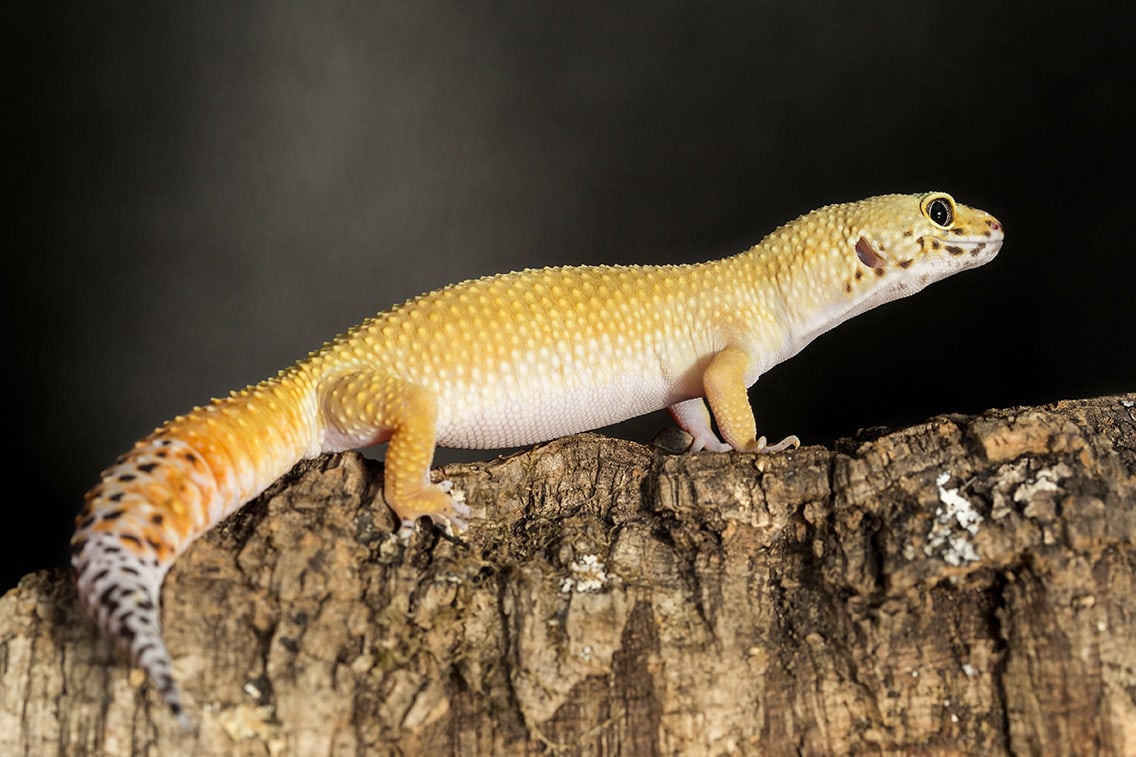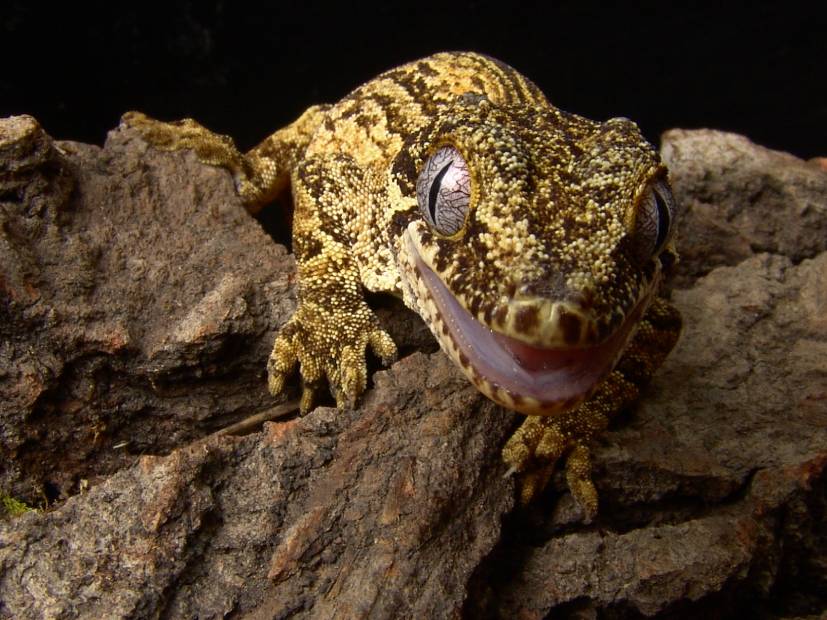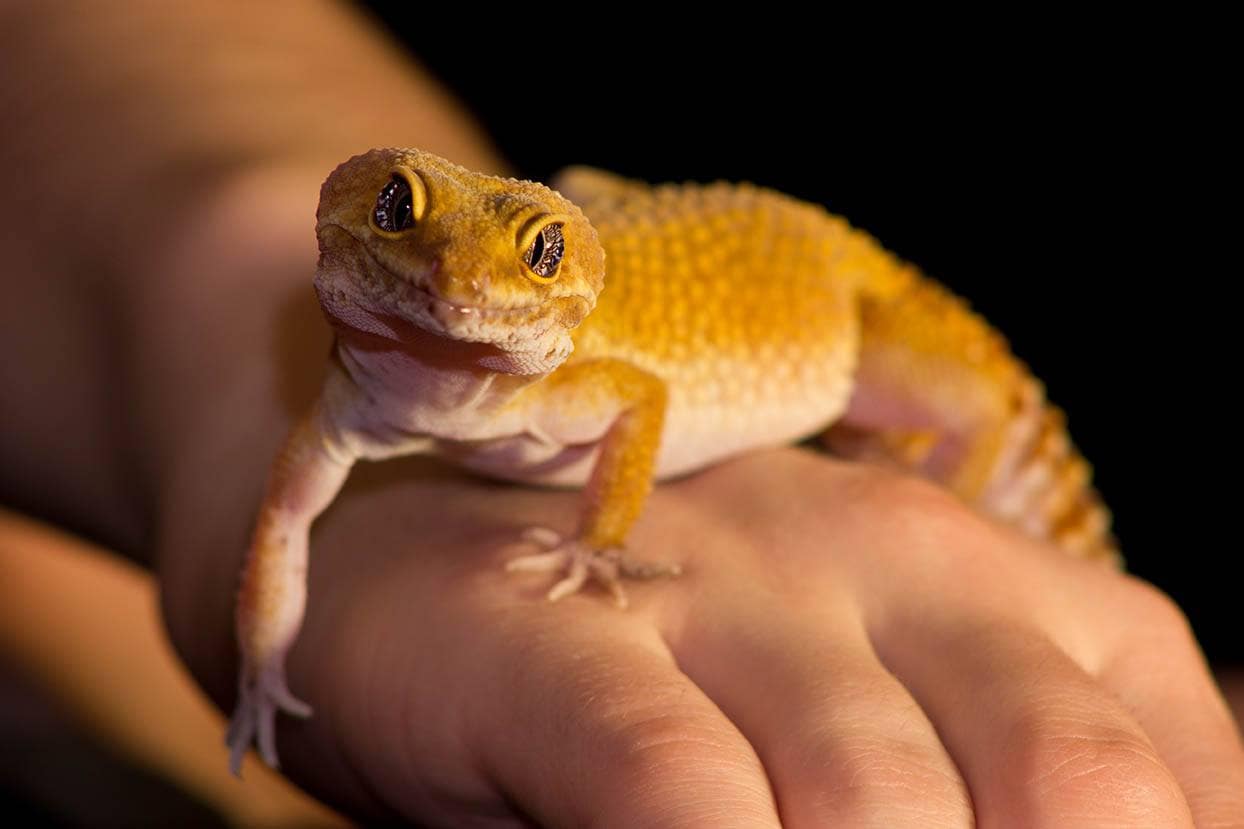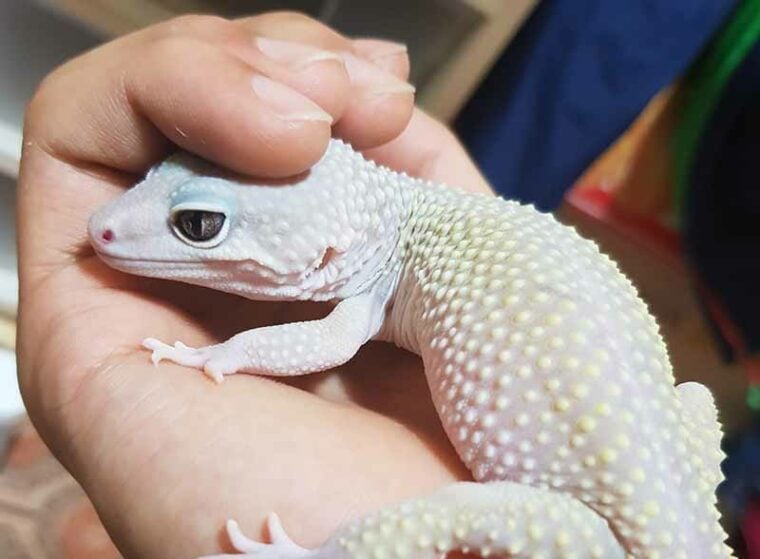
Leopard geckos are often thought of as great starter pets, especially for people who have never kept reptiles before. Even though they are relatively easy to care for, they have specific environmental and nutritional needs, like all reptiles.
Without proper care, leopard geckos will become sick. In some cases, they can become seriously ill or even die. If you’ve noticed that your leopard gecko has been looking a little bit pale lately, it’s important to determine the cause. Here are some of the reasons.
The 7 Reasons Why Your Leopard Gecko is Pale
1. Shedding
The most common reason for the paleness of leopard geckos is the skin preparing to shed. As it gets closer to time to shed, the skin may appear to lighten as it begins to pull away from the new layer of skin below. This is a normal part of shedding, so it’s not any cause for concern, but it’s very important to keep track of your leopard gecko’s shedding habits so you can tell the difference between shedding preparation and something more concerning.
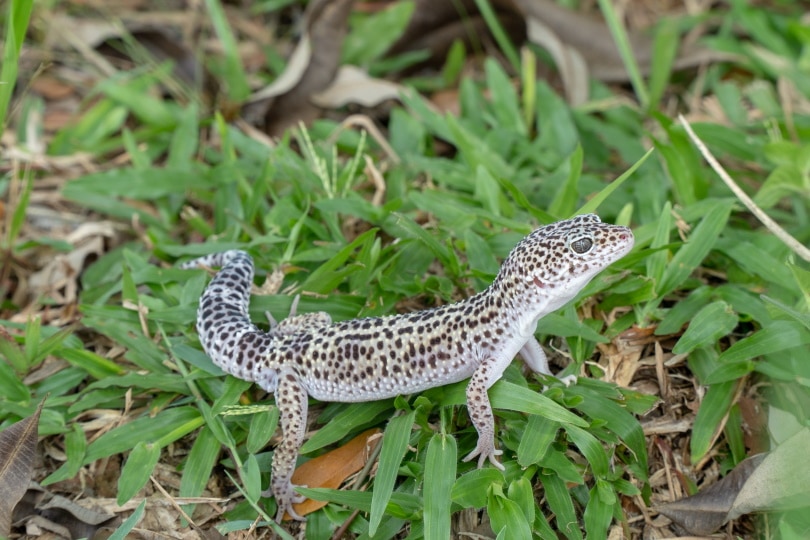
2. Retained Shed
Shedding is a natural process for leopard geckos, but that doesn’t mean that the process always goes smoothly. Multiple factors, including humidity, temperature, hydration, and nutrition can all impact your leopard gecko’s ability to properly shed.
Sometimes, pieces of the shed may become stuck. In some cases, your leopard gecko may need your help removing these excess pieces of shed, but make sure to research how to properly remove the shed without harming your leopard gecko. Stuck shed is common in places like the toes, ears, eyes, and nares (nostrils).
3. Stress
Stress can be caused by many things, but stress is dangerous for leopard geckos because it can lead to depression of the immune system, increasing the risk of illness. Some leopard geckos will experience a temporary lightening of their colors in periods of high stress.
If you suspect your leopard gecko is stressed, you need to determine the cause and remedy the problem. Evaluate your husbandry and ensure your leopard gecko is receiving appropriate nutrition, living in a properly set up enclosure, and being provided with medical care when needed.
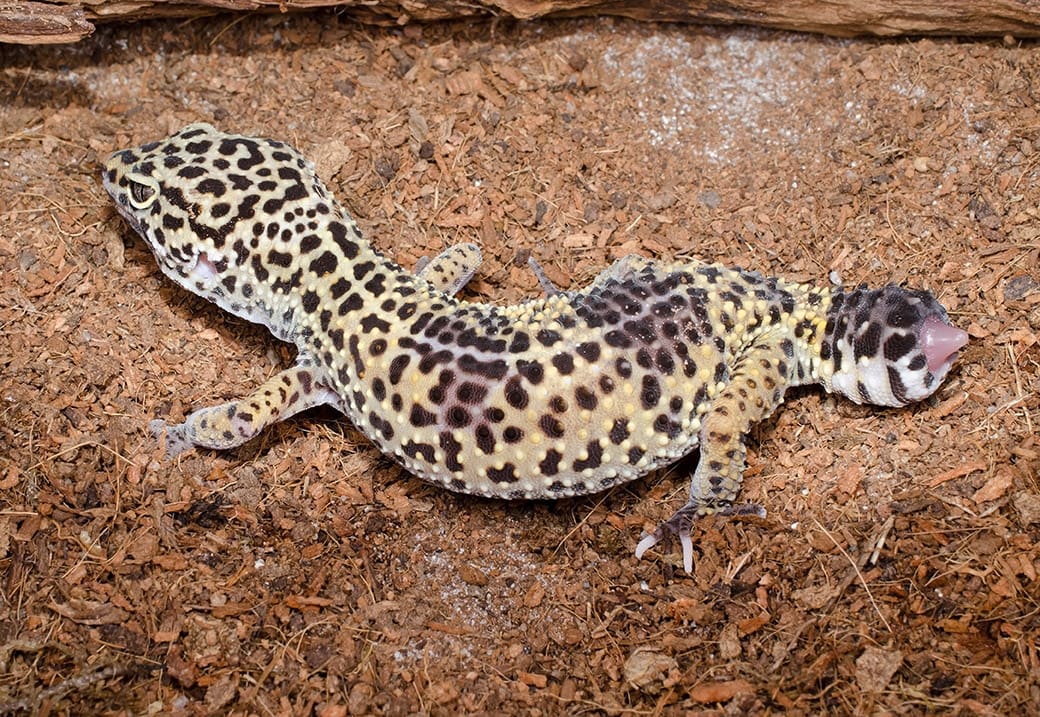
4. Dehydration
Dehydration in leopard geckos can lead to a lightening of the skin, and dehydration can directly lead to shedding problems, so it can be associated with a retained shed.
Your leopard gecko should always have access to fresh, clean drinking water, whether it’s in a shallow bowl or a gentle fountain. They should also live in an environment with proper temperature and humidity levels. Low humidity or maintained high temperatures can lead to dehydration. Keep in mind that factors like substrate, enclosure materials, and external temperature and humidity can all impact the levels within the enclosure.
5. Infection
There are a lot of infections that leopard geckos can acquire, including bacterial, fungal, and parasitic. Infections or infestations impacting the external body of your leopard gecko can cause lightening of the skin. Illnesses can take hold when your pet is stressed, but many things can allow infections to occur, including poor husbandry.
Fungal infections in particular are commonly noticed when white patches develop on the skin, but the skin color appearing lighter can happen with multiple problems that should be addressed by an exotic veterinarian.
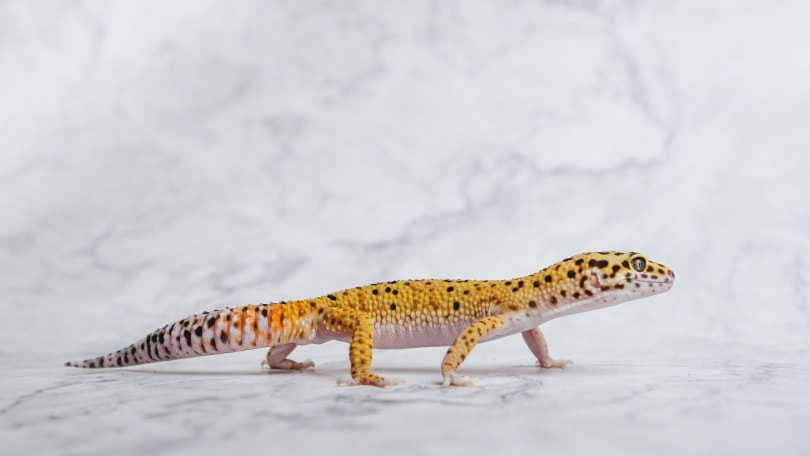
6. Environment
Poor husbandry is one of the top causes of illness, injury, and death in exotic pets. Reptiles, even leopard geckos, can have complex care needs. Without an appropriate environment, a whole slew of problems can develop, including stress, dehydration, infections and illnesses, and shedding problems.
Before bringing home a leopard gecko, you need to have a thorough understanding of how to create an appropriate environment for your new pet. Things to consider include enclosure material, substrate type, food and water access, humidity and temperature gauges, hides, and more.
Two big environmental culprits of skin lightening in leopard geckos are improper humidity levels and improper temperatures. Temperatures that are consistently kept too high can lead to skin damage and dehydration, leading to lightened and stuck sheds. Humidity levels that are kept too low can also lead to skin damage and dehydration, while excessively high humidity levels may increase the risk of bacterial and fungal infections.
7. Breeding
When it comes time to breed, leopard geckos may lighten in color or become dull. This is because the body starts focusing a large amount of energy on ensuring procreation, whether this is through the development of eggs in females or the need to outcompete others for a mate in males.
Because of the physical and mental stressors associated with breeding, only leopard geckos in peak health should be considered for breeding programs. Sickly or weak animals may not survive breeding or egg production.
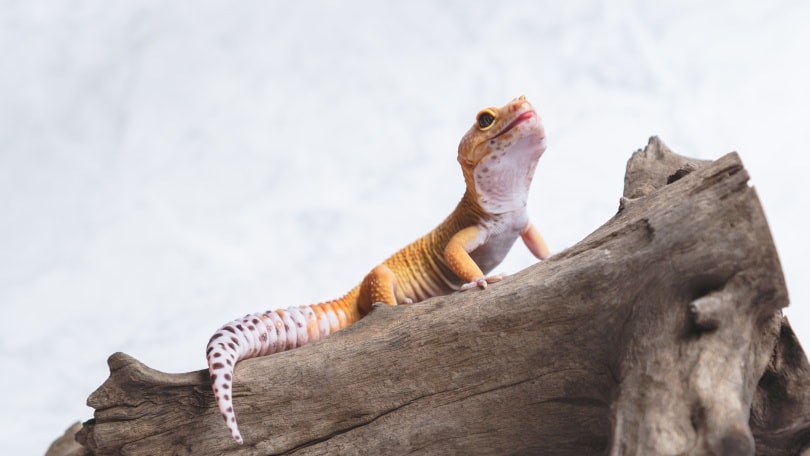
What Are the Signs of a Problem?
If your leopard gecko is becoming lighter in color, you need to identify why. If your pet is sick or experiencing a problem, there are other symptoms you can look for. Lethargy, inappetence, and hiding more than usual can all indicate that your leopard gecko isn’t feeling quite up to snuff.
If you suspect your pet may be sick, you need to reach out to your exotics vet as soon as possible. Infections, dehydration, and poor husbandry can cause rapid deterioration in leopard geckos. It’s important that you work to catch problems early to give your gecko the best prognosis if they become ill.
Conclusion
Although generally easy to keep, leopard geckos need to be kept in an appropriate environment. Poor husbandry will eventually lead to problems for your leopard gecko. Maintaining hydration and proper temperatures, providing a healthy and species-appropriate diet, creating a low-stress environment through good husbandry, and being vigilant in checking for problems can all help your leopard gecko stay healthy.
If your leopard gecko is experiencing color lightening in conjunction with lethargy, inappetence, or hiding, then a vet visit is in order.
Featured Image Credit: Love korea, Shutterstock



